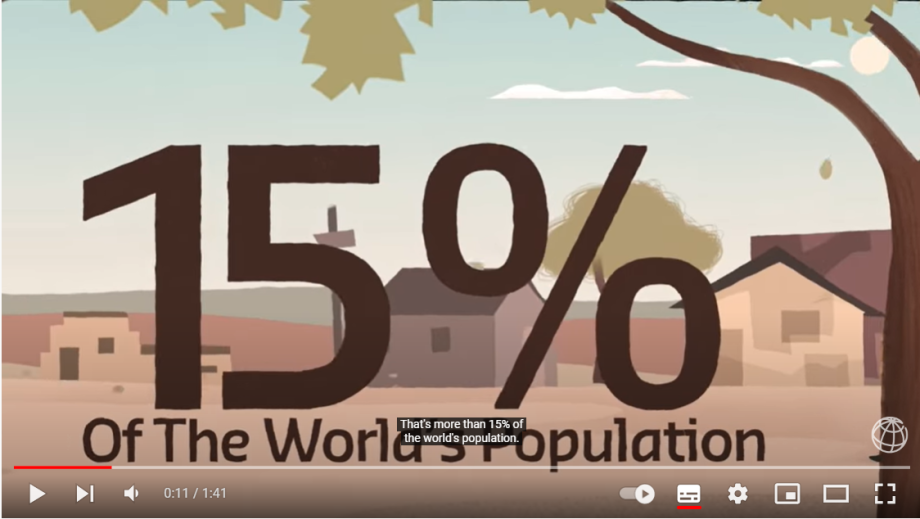What is disability
One billion of the world’s population – one out of every seven people on the planet – are women, men, girls and boys with disabilities. According to the United Nations (UN) at least 80% of that billion live in low-income countries.
The UN Convention on the Rights of Persons with Disabilities (CRPD) defines disability as 'an evolving concept that results from the interaction between persons with impairments and attitudinal and environmental barriers that may hinder their full and effective participation in society on an equal basis with others’.
Put simply disability can be defined as the relationship between a person’s impairment and their environment, or in terms of an equation:

An impairment on its own would not lead to disability should there be a completely inclusive and comprehensively accessible environment.
It is important to be able to clearly differentiate between what is impairment and what is disability. A good way to do this can be by reflecting on what are the root causes of impairment and disability. For impairment some of the causes can be attributed to accidents, war, natural disasters, congenital disposition, acquisition during child birth, or medical negligence etc. Whilst for disability root causes can be related to poverty, lack of an accessible environment, poor educational and health opportunities, and discriminatory practices among others.
In short, impairments are mostly irreversible, lifelong and can be supported by (re-)habilitation and habilitation; whereas causes of disability are reversible and can be addressed by identifying and removing barriers to participation be they attitudinal, social, political, economic or in communication.
Ultimately, the way in which people perceive and experience disability in day-to-day life is far more complex than a simple definition or equation. It is also highly influenced by cultural beliefs; for example, in some cultures, disability is erroneously viewed as a curse or the influence of a bad spirit. If you have had little exposure to disability and no lived experience, then you may have a number of fears or misconceptions. It is important to talk about these fears and discuss with colleagues who can support you to grow in confidence to be able to understand and talk about disability issues.
Disability inclusion matters for all
Persons with disabilities are more likely than others to experience adverse socioeconomic factors, such as less education, poorer health, fewer employment opportunities, and higher poverty rates.
